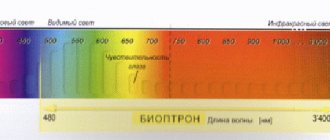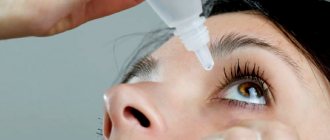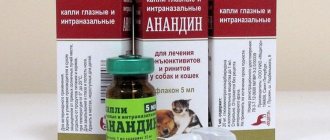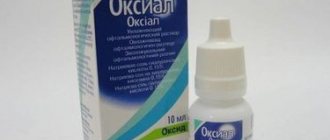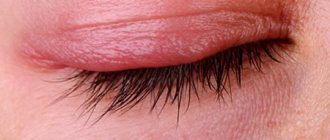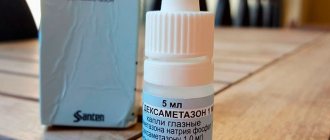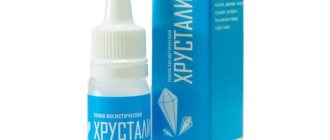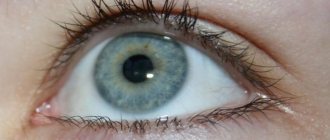The instructions for use of Actovegin say that with its help it is possible to increase the process of transfer and accumulation of oxygen in the body. For this reason, the reuse of the latter within cells increases. Thanks to this, the metabolism in the body accelerates and the energy potential of each cell increases. This medicine is dispensed by a pharmacist only with a prescription.
pharmachologic effect
Why is Actovegin needed? The instructions for use of the drug say that Actovegin affects metabolism. This happens in the following cases:
- When metabolism is difficult. This can occur as a result of hypoxia, when the process of oxygen entering the body is disrupted, or when there is an inadequate supply of oxygen to the cells.
- In situations requiring the consumption and use of large amounts of energy. Such cases are characteristic of the healing process and tissue regeneration.
Actovegin, both in tablets and in injections, functions perfectly during plastic metabolism (anabolism), and this affects the good absorption of all useful substances by the body. This remedy increases blood supply, which also has a beneficial effect on the body.
Reviews about Actovegin left by people who took this medicine confirm its high effectiveness.
Actovegin ointment: analogues
The question of the need to replace a drug with its analogues arises in two cases. Or if the drug is not available in the pharmacy chain (which is quite rare, you can almost always order it online and receive it by mail within one or two days). Or if the price of the drug is quite high, and you want to replace it with something more affordable. How to replace Actovegin ointment?
A traditional substitute for Actovegin ointment is Solcoseryl ointment . The ointment and gel of this brand also contains dialysate from the blood of calves. It also improves tissue regeneration and has some anti-inflammatory effects.
Solcoseryl ointment or Actovegin - which is better?
Solcoseryl in gel form is used in dental treatment, as well as as an eye ointment, and also for weeping bedsores and purulent wounds. Actovegin in ointment form is ineffective for treating mucous membranes and is used for dry wounds in the epithelialization stage, without pus. Ointment is an indispensable option for the treatment of wounds in the last stage, with the formation of crusts. Note: Actovegin ointment has more preservatives, and therefore differs from Solcoseryl in longer storage.
Indications for use
First, you need to find out for which pathologies the drug should be used. Let's look at the symptoms and diseases that fit this category:
- Cerebrovascular accident,
- Deviations in venous circulation,
- Angiopathy,
- Impaired skin absorption (trophic processes),
- Varicose veins, as well as changes in their shape,
- Various types of ulcers
- The appearance of bedsores,
- Prevention and treatment of radiation damage,
- Deformation of the eye shell,
- Deformation of the opaque membrane of the eye (sclera),
- Ulcers and burns of the cornea,
- Consequences of corneal transplantation,
- Corneal abrasions caused by contact lenses.
Actovegin is a proven remedy that helps treat trophic ulcers , bedsores and any lesions of the skin . If a qualified doctor does not recommend the use of Actovegin, it is possible to use its analogues.
Indications and contraindications
Indications for the use of Actovegin gel, ointment and cream are quite numerous. Among them, various lesions of the outer part of the eye are especially distinguished:
- burns;
- ulcers;
- complications after transplantation;
- keratitis;
- conjunctivitis;
- dry cornea;
- damage to the sclera as a result of the use of hard lenses.
The gel form of the drug has no restrictions on use and does not have a resorptive effect. For pregnant women and children, the medication is prescribed on a general basis; treatment with an external agent is also acceptable during lactation.
Release form
The drug Actovegin is available in the following forms:
- Pills
- Ointment,
- Cream,
- Gel,
- Ampoules for injections.
The doctor prescribes all release options according to a specific course of treatment, taking into account the severity of the disease.
This remedy promotes an effective fight against osteochondrosis. Actovegin tablets should be taken 1-2 pieces no more than 3 times a day. A different treatment regimen has been developed for pregnant women: the expectant mother should take 1-2 capsules 2 times a day.
Characteristics of release options
- One package of the drug in the form of dragees contains 100 tablets.
- The solution used for intramuscular injection is available in ampoules of 2.5 ml and 10 ml.
- The solution, which is administered intravenously, can be 10 or 20 percent. The quantity of one bottle of the drug is 250 ml.
- The gel represents 20% of the mixture. This form of release of Actovegin is sold in convenient tubes of 20 g.
- You can buy 5% ointment in the same form, and 20% eye gel is available in quantities of 5 g in one tube.
Mode of application
It is important to remember that the application option (ampoules or ointment), as well as the dosage, depend, first of all, on the nature, form and severity of the disease. Actovegin can be prescribed for topical use or for oral administration.
The product is effective in absolutely any form, as evidenced by reviews and instructions for the drug. Consumers note the high results of using the medicine; it is characterized exclusively on the positive side.
Instructions and reviews highlight the dosage of the drug:
- Take 1-2 tablets 3 times a day before meals. The dragee should be washed down with a few small sips, but not chewed.
- Inject 10-20 ml of the drug intramuscularly or intraarterially. In this case, the dosage is dictated by the intensity of the disease. After some time, another dose is prescribed - 5 ml.
- 250 ml of Actovegin is used intravenously. Moreover, the rate of administration of the drug should not be more than 3 ml. For injections, you need to dilute 50 ml of solution in 200 ml of glucose and saline solution. No more solutions should be added to this mixture. No more than 20 infusions are made per course.
When using Actovegin parenterally, you must be especially careful, because with this method the development of an allergic reaction is possible . To avoid such situations, specialists first check the body’s reaction to Actovegin, explaining to the patient in advance why this is needed. This procedure can only be carried out under the supervision of a doctor; a maximum of 5 ml of the drug is administered. In addition, the specialist is ready at any time to provide first aid to the patient, if necessary.
The instructions for Actovegin and its analogues state that this drug has hypertonic characteristics. In this regard, it is very important to monitor the exact indicators of the water-electrolyte process.
Application of ointment
Actovegin and its analogues in ointment form, according to the instructions, also have very high rates of effectiveness. The gel can be prescribed in the following cases:
- for complete cleansing, as well as treatment of ulcers,
- for the treatment of burns.
In such cases, the ointment should be applied in a thin layer to the skin. Many consumers note in their reviews that Actovegin and its analogues in gel form help in the treatment of radiation injuries to the body.
If the ointment is used to treat ulcers, the product must be applied in a thicker layer. This is necessary so that the drug can act under the skin. After applying the gel, cover the sore spot with a compress with ointment to prevent sticking to the wound. The bandage must be changed once a week. If the wound gets very wet, the bandage should be changed several times a day.
The manufacturer of the drug claims that Actovegin promotes wound healing , including those that often get wet. The ointment is used after bedsores have formed, and the drug must be applied in a very thin layer.
In order to prevent skin damage from rays, the medicine is applied between sessions after the procedure.
Using eye gel
Actovegin eye gel must be applied directly to the affected eye. To do this, you only need one drop of the mixture. It is recommended to use the product no more than 3 times a day. After opening the package of gel, it should be used for no more than 4 weeks.
The instructions for use of Actovegin, as well as in reviews of it, say that the composition of this drug includes special components, due to which the drug in any form of release gives high positive results. If necessary, a specialist can prescribe analogues of the drug if the instructions for its use contain various negative characteristics, as well as intolerance to the drug.
Injections
Actovegin injections help launch regeneration and improve metabolic processes. It should be noted that the use of injections is marked by the highest effectiveness in comparison with other forms of this drug. The dosages mentioned earlier are approved for use only after they have been prescribed by the attending physician.
What is Actovegin ointment used for?
Actovegin was developed as a means of neurological treatment. However, it quickly expanded beyond its original boundaries and became a means of widespread use in various medical fields. It is prescribed by almost all doctors - diabetologists, ophthalmologists, dentists, cosmetologists, surgeons.
We have already become familiar with the general theory of treatment with biological stimulants. Now let’s turn to the instructions for use, which describe in detail what Actovegin ointment treats in humans.
- Actovegin ointment is prescribed for various skin injuries (minor abrasions and scratches, deep wounds). It is applied to open wounds up to 6 times a day.
- For any burns - thermal (hot water, steam, electricity), chemical (acid), solar, etc.
- For frostbite.
- For the treatment of bedsores (damage to soft tissue due to impaired blood supply, constant compression in bedridden patients).
- To treat skin irradiation (during radiation therapy), as well as to prevent the consequences of irradiation of the skin or mucous surfaces, it is better to use a gel, but ointment is also possible.
- For the treatment of trophic ulcers (their therapy is usually complicated by vascular disorders).
- For varicose veins , the ointment is applied to the bulging veins under a bandage at night. This increases blood flow and reduces blood stagnation in the veins, reducing their bulging.
The instructions for use for Actovegin ointment say that the effect of its application occurs within 20-30 minutes. In this case, the effectiveness of treatment is determined by the weakening of painful symptoms. Monitoring the presence of therapeutic components in tissues and blood is difficult. They are biological substances and themselves are also present in the human body. At the same time, they are no different from human enzymes, peptides, and trace elements.
Actovegin ointment in cosmetology
Actovegin facial ointment is used as a remedy for acne, blackheads, ulcers, peeling and wrinkles . Important: the drug contains foreign biological components, which in some cases can cause an allergic reaction. Therefore, if you are using the composition for the first time, do not apply it all over your face at once . Limit yourself to a small area of skin on your cheek or wrist.
The action of Actovegin anti-wrinkle ointment is based on its ability to stimulate the regeneration (formation) of new cells. The ointment composition is effective for fine wrinkles and expression lines, and is weakly effective for deep wrinkles.
Actovegin also restores skin elasticity and improves complexion (due to normalization of blood flow).
In addition to the cosmetic effect, Actovegin is used to treat skin inflammation. The ointment composition is applied to the face to treat acne and acne.
Note: a gel is better suited for treating pustular rashes.
Actovegin ointment in gynecology
The regenerating properties of the ointment and a slight anti-inflammatory effect have found application in the treatment of cervical erosion . The properties of the composition are most fully manifested after the cauterization procedure . For two weeks after it, women are advised to place the ointment with a tampon inside the vagina.
Actovegin ointment is also used to treat ruptures and other perineal injuries after childbirth . The composition of the ointment is approved for the treatment of pregnant and lactating women. At the same time, it has a high wound healing ability.
Use of the product during pregnancy
Actovegin is quite often prescribed to women carrying a child. The use of this drug will avoid repeated miscarriages and will also help preserve the fetus. If a woman suffers from diabetes, using Actovegin during pregnancy will minimize possible risks for the child and the expectant mother. The drug also helps with such pathologies as:
- placental abruption,
- miscarriage,
- Fetoplacental insufficiency,
- Disturbance of normal blood circulation,
- Hypotrophy.
Poor blood circulation in a pregnant woman’s body leads to insufficient oxygen consumption by the child. This situation can lead to complications, including miscarriage. To avoid all the pathologies mentioned above, the drug Actovegin is prescribed.
Pharmacists also recommend using this medication already during pregnancy planning. Actovegin is absolutely safe during breastfeeding.
The use of Actovegin by pregnant and lactating women is permitted only if the medicine has been prescribed by a qualified physician. The doctor prescribes Actovegin 5, Actovegin 10 or other options. The prescription of a certain type of drug is dictated by the course of the disease, symptoms and other factors.
Side effects
Before taking Actovegin in one form or another, you need to familiarize yourself with the side effects of the drug.
Allergic reactions include the following symptoms:
- hives,
- increased sweating,
- increase in body temperature,
- feeling of a rush of blood.
Side effects in the respiratory system:
- feeling of constriction in the chest area,
- difficulty swallowing,
- a sore throat,
- feeling of suffocation.
Other side effects:
- itching,
- burning of the skin area on which the gel or ointment is applied,
- swelling,
- chills,
- immune system reaction,
- pain in muscles and joints.
When using eye gel, the following symptoms are possible:
- lacrimation,
- redness of the sclera.
It is important to remember that, in addition to the above, other side effects associated with the individual characteristics of the body are possible. This depends on the degree of tolerance of a particular drug, as well as the body’s reaction to it.
Sometimes patients experience redness and rashes in the area where the injection was given. After detecting any abnormalities, it is necessary to interrupt treatment with this drug and also seek the help of a doctor.
Despite all this, the effect of Actovegin is almost not marked by the occurrence of any side effects in adults. Side effects can be read in the instructions. As practice shows, any side deviations appear quite rarely.
Side effects
As a rule, Actovegin in the form of cream and gel is well tolerated, but in rare cases it can cause undesirable reactions from the eyes or the body as a whole. Most often, patients complain of the following side effects:
- redness and itching of the cornea;
- feeling of sand under the eyelids;
- dry mucous membranes.
On the part of the body, intolerance to Actovegin can manifest itself as shortness of breath, skin rash, and very rarely - anaphylactic shock.
If such symptoms appear, you should stop using the drug and consult a doctor to change the drug.
Analogs
The most common analogues of Actovegin:
- Solcoseryl (in jelly form),
- Solcoseryl (injection solution),
- Kurantil 25,
- Cortexin.
All of the above products are the most popular analogues of Actovegin.
Often the situation requires replacing one drug with another. That is why the topic of Actovegin analogues is relevant. The fact is that this product has a specific composition. Similar products can have the same effect as Actovegin achieves, but their composition is often significantly different.
Let us list the characteristics that Actovegin analogues have:
- The components included in solcoseryl completely duplicate the components of Actovegin. For this reason, this product is the most identical to the original.
- Curantil dilates blood vessels and also slows down the process of combining different platelets in the blood, resulting in improved microcirculation.
- Cortexin is used for poisoning; it has a beneficial effect on blood circulation. However, the main advantage of Cortexin is that this drug is an anticonvulsant. It is important to remember that Cortexin should not be used for skin lesions.
Before using an analogue, you should consult a qualified specialist . It is also necessary to carefully read the instructions: study contraindications, features of the components of the medicine.
Composition and effects
Actovegin cannot be considered from the point of view of generally accepted pharmacological norms, since it contains only natural components present in any organism.
The main active ingredient of the drug - deproteinized hemodialysate (concentrate) from the blood of young calves - has an antihypoxic effect, improves blood circulation, stimulates phosphate metabolism, accelerates the breakdown of lactic acid salts and ketones, restores pH and tissue trophism.
The secondary effect of Actovegin is to activate glucose consumption and increase the energy resources of the cell. The medicine increases tissue resistance and reduces intraocular pressure.
The additional components included in the product have no therapeutic value and are required only to ensure the technological properties of the drug.
Alcohol compatibility
During the treatment period, doctors strongly recommend refraining from drinking alcoholic beverages. This is due to the fact that Actovegin is prescribed for quite serious diseases.
The fact is that Actovegin improves the regenerative ability of cells , while alcohol slows down this process.
This drug thins the blood when alcohol, on the contrary, narrows it. It is important to remember that these different reactions can lead to side effects. An organism weakened by disease is especially susceptible to their occurrence.
Price
The cost of this drug depends on the form of release. In different medical institutions and pharmacies, prices for Actovegin do not differ significantly:
- The average cost of injections, pricks and IVs is 614 rubles. If the package contains a larger number of ampoules, the price of the drug will increase to approximately 1,300 rubles.
- The average cost of Actovegin tablets is slightly higher – 1,600 rubles.
- The drug in the form of a 5% ointment will cost the buyer approximately 150 rubles.

